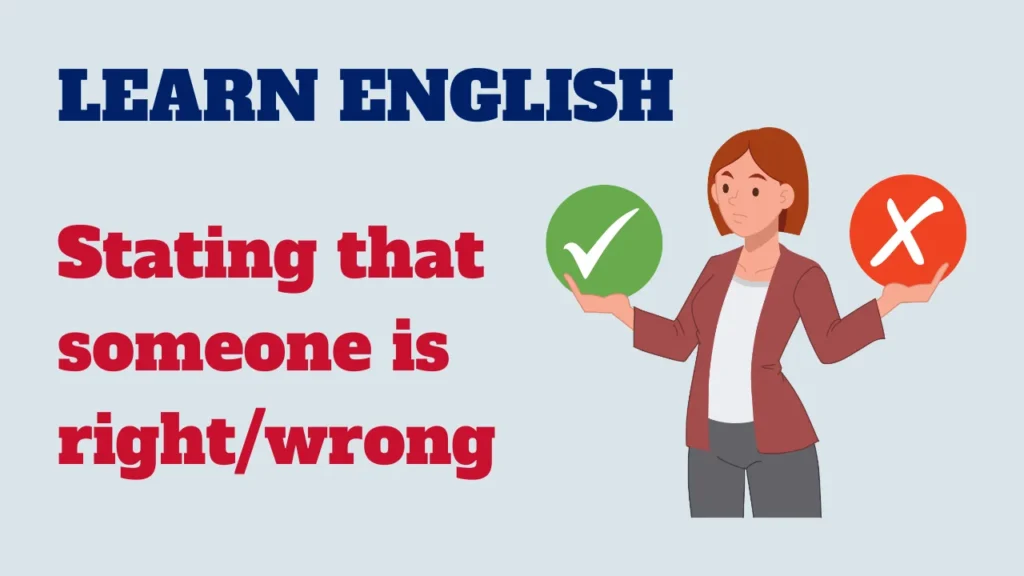In this lesson, we’ll explore expressions and phrases that can help you effectively convey agreement or disagreement in English conversations.

Clearly expressing your opinion on whether someone is right or wrong is an essential aspect of communication. Let’s dive in!
Agreeing:
Absolutely/Exactly:
“Absolutely, I couldn’t agree more.”
“Exactly, that’s my perspective as well.”
You’re right:
“You’re right, the data supports that conclusion.”
“I think you’re right about the importance of this issue.”
I agree with you:
“I agree with you; the proposed solution seems reasonable.”
“I completely agree with you on that point.”
That’s a valid point:
“That’s a valid point, and it’s worth considering.”
“I think that’s a valid perspective to take into account.”
I think so too:
“I think so too; it’s a well-founded argument.”
“Your analysis makes sense, and I think so too.”
Disagreeing:
I’m afraid I disagree:
“I’m afraid I disagree with your interpretation of the data.”
“I respect your opinion, but I’m afraid I disagree.”
I see where you’re coming from, but:
“I see where you’re coming from, but I have a different viewpoint.”
“I appreciate your perspective, but I see it differently.”
I’m not sure I agree with that:
“I’m not sure I agree with that assessment of the situation.”
“While I respect your opinion, I’m not sure I agree.”
I beg to differ:
“I hear your point, but I beg to differ on this matter.”
“I appreciate your perspective, but I beg to differ.”
I’m not convinced:
“I’m not convinced that approach will yield the desired results.”
“I respect your opinion, but I’m not convinced of its effectiveness.”
Remember to use these expressions diplomatically to maintain a positive and constructive tone in your conversations. Practice incorporating these phrases into your discussions to become more proficient in expressing agreement or disagreement. Happy practicing!



